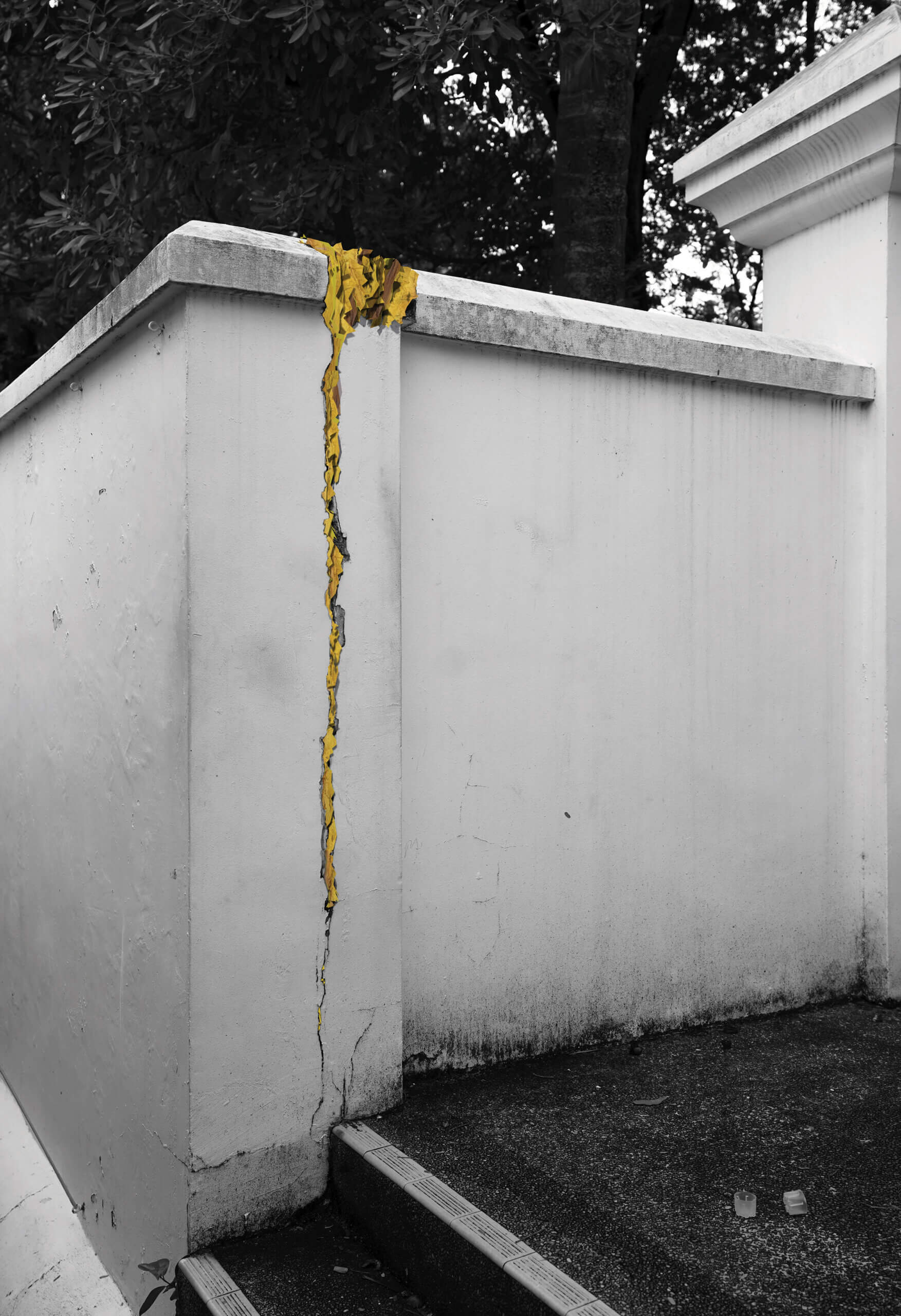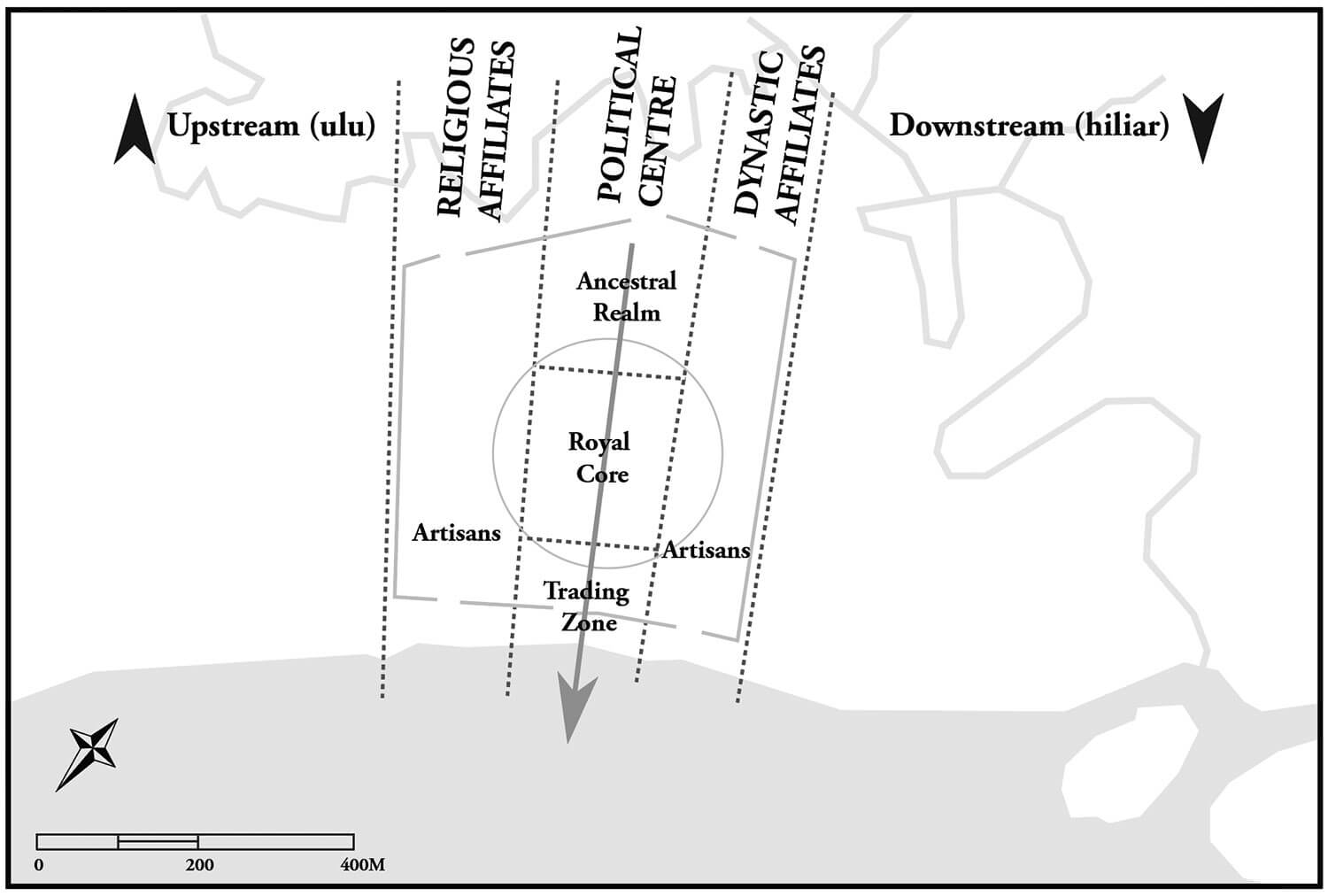Lancang Kuning (unrealised)
The Malay Heritage Centre used to be Sultan Hussein’s Istana. As part of the Treaty of 1819, the British provided an Istana for the Sultan. Under the guise of road improvement, the Colonial British’s second resident of Singapore, John Crawfurd dug two roads across his compound to curtail the Sultan's influence.
Responding to the site of Kampong Gelam, the proposal reimagines the former Istana as a Lancang Kuning, a yellow Malay royal ship. In this metaphor, the ship appears whole, but is in fact porous. The proposal was to apply Gelam tree bark — that was traditionally used as caulking for such Malay ships — across all the cracks along the boundary wall.
In 1999, the remaining 14 descendants staying at the Istana were asked to moved out from the Istana. This persistent issue is not easily recuperated by either colonial and post-war administration: whose roads? whose Istana? and whose lands?
As the venue owner did not accept the proposal, it was turned into 2 billboards that were placed in-front of the boundary wall, during the art walk.
Media: Gelam tree bark, yellow stain
Dimension: variable
Commissioned by: OH! Open House, for OH! Kampong Gelam
Text by: OH! Open House, Hao Yang



Cosmological layout of the port town. Image credit: Morphology of the traditional city in maritime Southeast Asia,
in Imran bin Tajudeen. “Reading the Traditional City in maritime Southeast Asia: Reconstructing the 19th century Port Town at Gelam-Rochor-Kallang, Singapore.” In Journal of Southeast Asia Architecture 8(2005), 1-26. Find Your Place in History: City Centre / Architecture lost and found, Noelle Q. De Jesus.
Email: antchin69@hotmail.com | IG: anthonychin.art